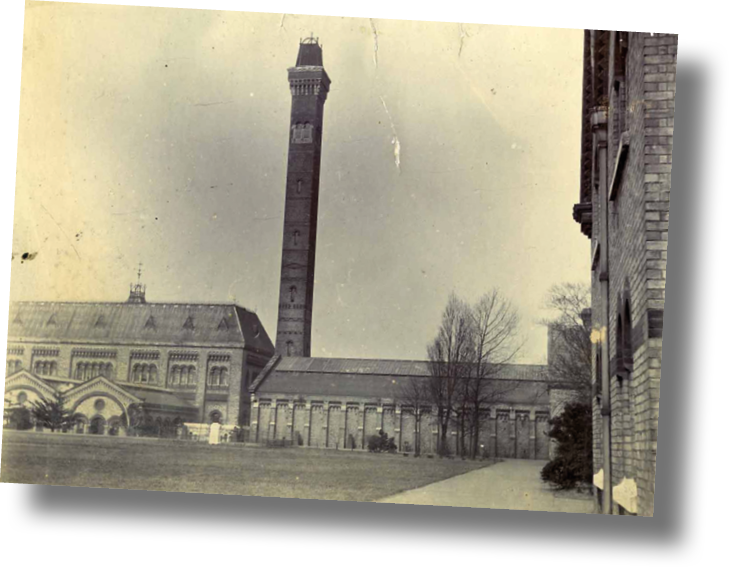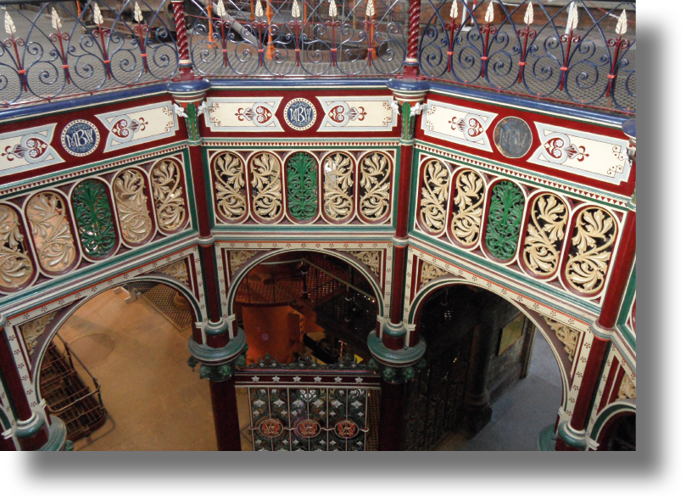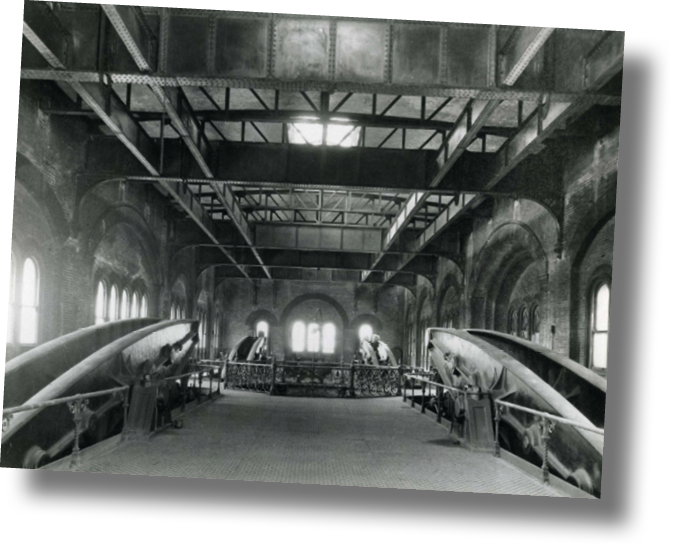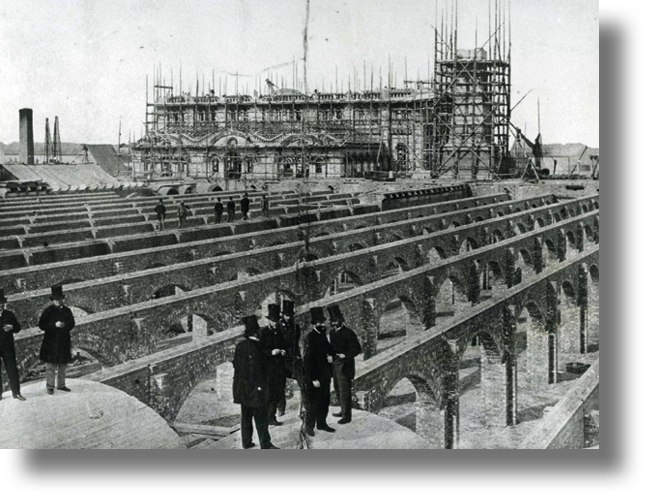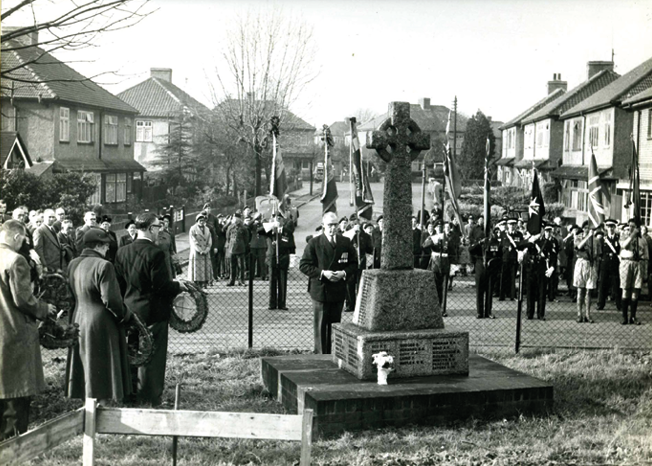160 years of Crossness Pumping Station
The Crossness Southern Outfall Works on Erith Marshes were officially opened by the Prince of Wales – later Edward VII – on 4 April 1865.
The Works formed one part of a system of sewers across London created by the Metropolitan Board of Works under its chief engineer, Joseph Bazalgette. Constructed by William Webster, Crossness Pumping Station represented an extraordinary feat of public health engineering. Containing the four largest rotative beam engines ever constructed at the time, the building itself was in a Victorian Romanesque style with a 200ft high chimney.
Crossness Southern Outfall Works
Crossness Pumping Station today
At the grand opening 500 dignitaries including the Prime Minister and two archbishops were astonished by the striking cathedral-like interior of elegantly decorated iron columns.
The Prince of Wales switched on the engines and 66 miles of sewers started operating. The guests were treated to a buffet in the fitting shop which had been transformed into a banqueting hall. Outside the guests admired the meticulously tended gardens, school, cricket pitch and 33 workers’ cottages.
Crossness Pumping Station, 1970
Crossness Southern Outfall Works under
construction, 1864
Crossness played a vital role in improving sanitation in London. The beam engines fell out of use in 1953 and a working group was established in 1985 with the aim of restoring the buildings and engines to their former condition. Volunteers of the Crossness Engines Trust continue the work to this day.
Grade I listed Crossness is an important industrial heritage site both nationally and locally. It is open to visitors on Steaming Days or by Guided Tour.
Visit Crossness Trust for more information

